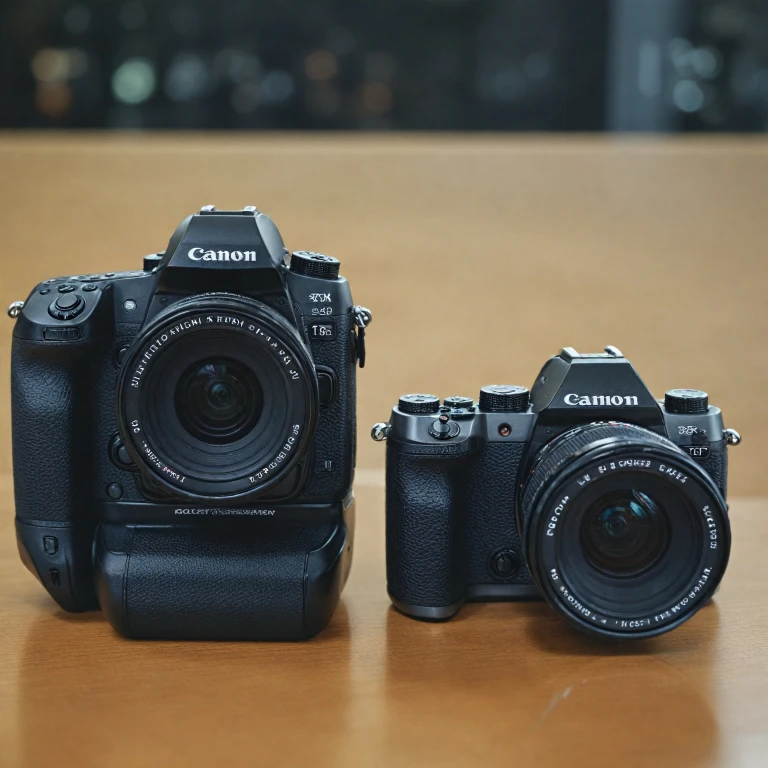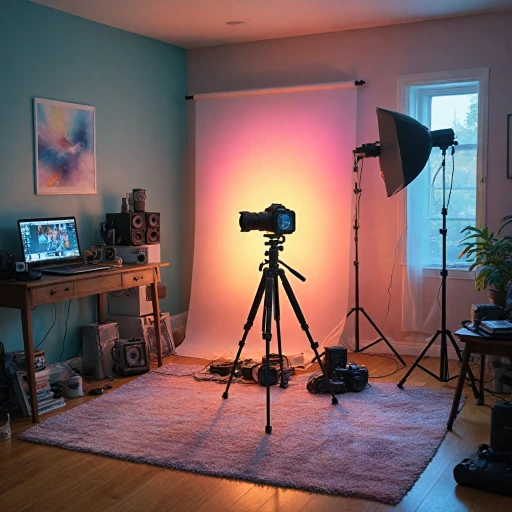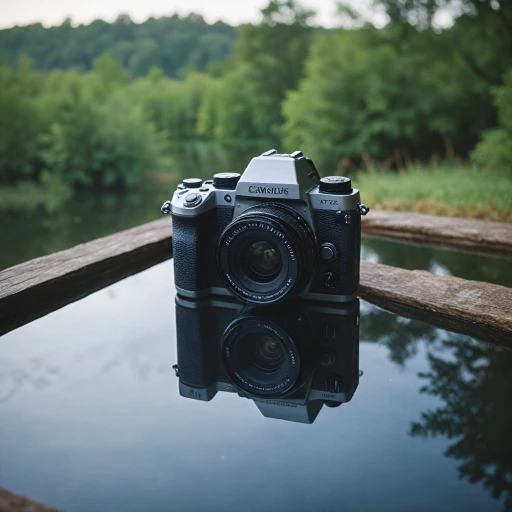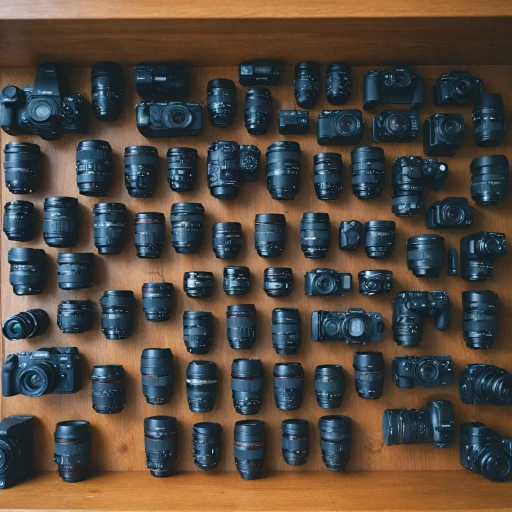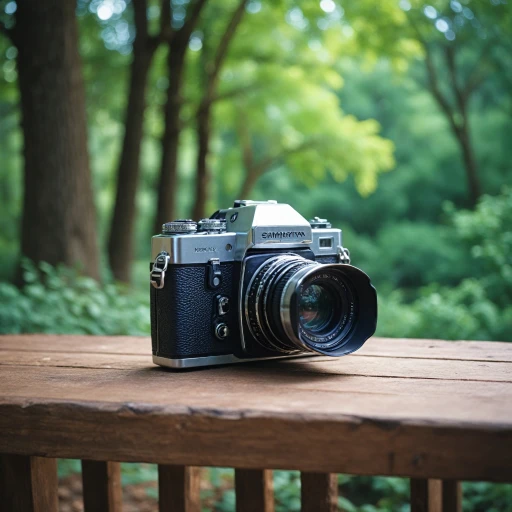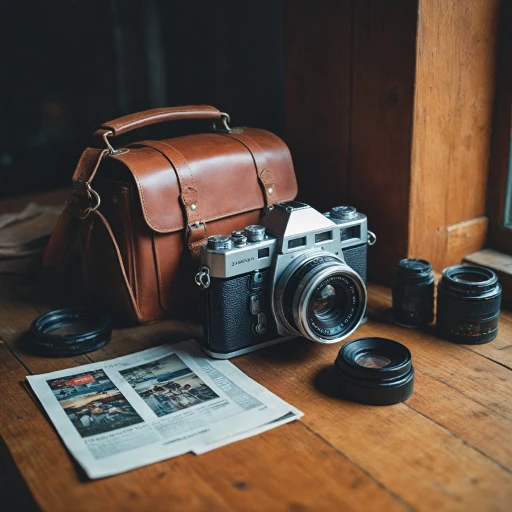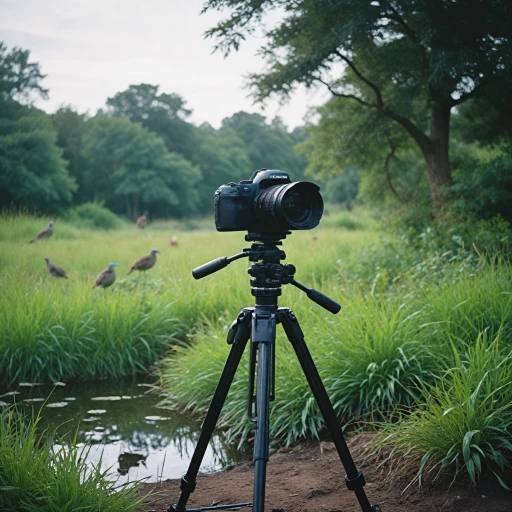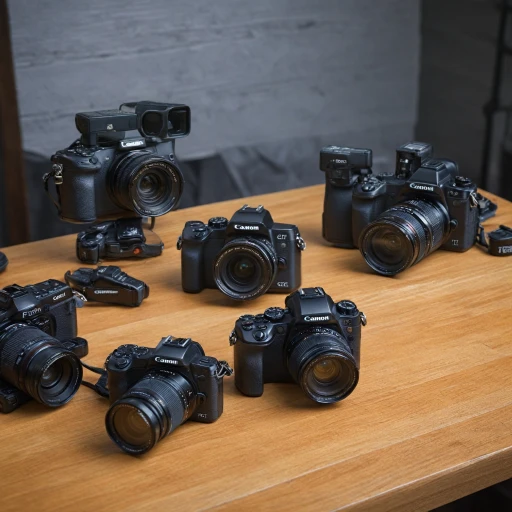
The Basics of DSLR and Mirrorless Cameras
Understanding DSLR and Mirrorless Cameras
When diving into the world of digital cameras, two dominant types often come up in discussions—DSLRs and mirrorless cameras. Understanding the basics of these technologies can significantly impact your decision when purchasing a new camera. DSLRs, or Digital Single Lens Reflex cameras, have been a staple in photography for years. These cameras use a mirror mechanism within the camera body to reflect light coming from the lens up to an optical viewfinder. This traditional architecture allows photographers to see exactly what the lens sees, offering a "what-you-see-is-what-you-get" experience. On the other hand, mirrorless cameras forego the mirror system entirely. Instead, they utilize an electronic viewfinder or simply the camera's LCD screen for composition, relying on a digital sensor to directly capture the full image. This shift means that mirrorless cameras tend to be more compact due to fewer mechanical components.Key Differences in Design and Functionality
- Viewfinders: DSLRs often feature an optical viewfinder, providing a real-time view of the scene. However, mirrorless models use electronic viewfinders, which digitally display the scene and can offer exposure previews, beneficial in low light shooting.
- Autofocus Systems: DSLRs typically boast a reliable autofocus system thanks to a dedicated sensor. Some newer mirrorless models, though, incorporate advanced autofocus technologies that sometimes surpass DSLRs in speed and accuracy, notably seen in brands like Sony and Canon EOS.
- Size and Weight: While traditional DSLRs are generally bulkier due to their complex mirror systems, mirrorless alternatives are significantly lighter and more portable, appealing to travelers and street photographers.
Image Quality and Performance
Evaluating Image Output and Functionality
When diving into the realm of digital photography, image quality is a significant factor to consider. The choice between DSLR and mirrorless cameras frequently revolves around the distinct features each offers in capturing outstanding images. Both categories, through their advancements, boast excellent image quality. DSLRs like the Canon EOS series and Nikon models are revered for their large sensors and ability to capture detailed images, especially in low light conditions. They're equipped with optical viewfinders that provide a real-time look at the scene, a benefit when precision is vital. Mirrorless cameras, such as the Sony and recent Canon EOS mirrorless camera families, also promise exceptional imaging thanks to their full-frame sensors. These sensors provide vibrant colors and a broader dynamic range, which can be exceptionally appealing to many photography enthusiasts. Unlike DSLRs, mirrorless options lack an optical viewfinder but incorporate electronic viewfinders or live view screens, giving photographers a digital display of the final image. In terms of autofocus systems, both camera types have made substantial improvements. However, mirrorless cameras generally lead the charge with faster electronic autofocus technology. Their ability to provide on-sensor phase detection ensures highly accurate and swift focusing, beneficial for photographers focused on speed and precision, such as in sports or wildlife shooting. While scrutinizing performance, consider the different brands' specific offerings. DSLR cameras from Nikon and Canon maintain a stronghold due to their robust performance and reliability. Mirrorless categories, however, are not far behind with tech leaders like Sony emphasizing advanced imaging technology that rivals or even exceeds traditional DSLRs in many aspects. Choosing between these systems should be a decision based on personal shooting needs and preferences. Whether it's the trusted image quality of DSLRs or the evolving capabilities of mirrorless cameras, the right choice varies per individual, ensuring the photography experience aligns with your creative vision. For a deeper exploration of these factors, the differences between mirrorless and DSLR cameras provide further insights into how these systems compare in various shooting conditions.Portability and Design
Compactness Meets Versatility in Modern Design
When it comes to portability and design, there's a noticeable distinction between DSLR and mirrorless cameras. One of the most appealing advantages of mirrorless cameras is their compact design. Without the need for a bulkier internal mirror mechanism, mirrorless models are generally more lightweight and portable compared to their DSLR counterparts. For photographers who prioritize ease in traveling with their gear, this can be a decisive factor. DSLR cameras, such as the Canon EOS series or Nikon models, have a more robust build, often resulting in a heavier package. These cameras integrate an optical viewfinder, which adds to their size but provides a direct optical experience without any electronic processing delay. This feature is especially appreciated by many professional photographers who value the optical viewfinder's immediacy, especially in fast-paced shooting environments. In contrast, mirrorless cameras, including popular choices like the Sony Alpha series, make use of electronic viewfinders or rely on the rear screen for composition. While some purists argue that electronic viewfinders lack the immediacy of an optical viewfinder, innovations in technology have significantly reduced this gap. Nowadays, high-resolution electronic viewfinders offer impressive image clarity and additional information overlays that can enhance the shooting experience. For those interested in choosing the right camera for beginners, considering how you plan to use the camera in varying conditions—from studio sessions to on-the-go photography—is crucial. This choice often boils down to how important factors like portability, ease of viewing, and the overall shooting experience are to your photography needs. In summary, while DSLRs offer durability and an optical shooting experience, mirrorless cameras shine in portability and modern electronic features. Weighing these aspects according to your priorities will greatly assist in making an informed purchasing decision.Lens and Accessory Compatibility
Advantages of Lens and Accessory Compatibility
When it comes to lens and accessory compatibility, the choice between DSLR and mirrorless cameras can greatly impact your photographic experience. It's crucial to consider the options available, as this directly affects versatility and personalization in your photography journey.
DSLR Cameras: One of the main strengths of DSLRs is their expansive lens compatibility. These cameras, including popular models like Nikon, Canon, and Sony, have been around for years, meaning they support a vast array of lenses. This is particularly advantageous for enthusiasts who may already own a collection of DSLR lenses. Additionally, with the presence of an optical viewfinder, DSLRs offer a unique shooting experience that's trusted by professionals, especially in dynamic photography conditions.
Mirrorless Cameras: On the flip side, mirrorless cameras have significantly evolved, and brands such as Sony, Canon, and Nikon offer full-frame options like the Canon EOS and other electronic viewfinder-equipped models. Initially, the range of lenses for mirrorless systems was limited. However, manufacturers have since expanded their offerings, catering to both entry-level and pro photographers. The lens mount systems in mirrorless models are designed to be more compact, aligning with the camera's overall portable design.
The integration of advanced autofocus systems in mirrorless cameras, relying on electronic viewfinders or live view, offers a seamless low light shooting experience. These cameras often excel with native lenses but might present challenges when using adapted lenses due to potential autofocus inconsistencies.
For versatile photography styles, it's essential to evaluate the lens and accessory options that align with the specific capabilities of each camera type. Whether the priority is legacy lens adaptations or leveraging modern technology with native lenses, the compatibility hinges on your photography needs, be it a mirrorless or a DSLR setup.
Battery Life and Durability
Powering Your Photography: Battery Life and Durability
When it comes to choosing between DSLR and mirrorless cameras, battery life and durability are crucial factors to consider. These elements can significantly impact your shooting experience, especially during extended photography sessions or when traveling.
DSLR cameras, like the Canon EOS series, are known for their robust battery life. This is largely due to their optical viewfinders, which consume less power compared to the electronic viewfinders found in mirrorless cameras. As a result, DSLRs can often shoot hundreds more images on a single charge, making them ideal for long days of shooting without frequent battery changes.
On the other hand, mirrorless cameras, such as those from Sony and Nikon, tend to have shorter battery life. The reliance on electronic viewfinders and live view modes means they draw more power. However, advancements in battery technology are gradually closing this gap, with newer models offering improved performance.
Durability is another aspect where DSLRs often have an edge. Their larger bodies can accommodate more rugged construction, which is beneficial for photographers who frequently shoot in challenging environments. Mirrorless cameras, while generally more compact, are also being designed with durability in mind, featuring weather-sealed bodies in many high-end models.
In summary, if extended battery life and rugged durability are top priorities, a DSLR might be the better choice. However, if you prefer the compact design and advanced features of mirrorless cameras, investing in extra batteries and protective gear can help mitigate these concerns.
Cost Considerations
Price Considerations in Digital Photography
When evaluating the financial aspect of digital photography, the choice between DSLR cameras and mirrorless cameras often plays a crucial role.- Initial Investment: Generally, DSLRs might seem more economical at face value, especially beginner-level kits. However, mirrorless options, particularly from brands like Sony and Canon, also present competitive price points today.
- Long-term Costs: Upgradability should be considered. DSLRs often boast a wider range of compatible lenses and accessories. With companies like Nikon, Canon offering an extensive selection, the ongoing cost of acquiring lenses and gear could tip the balance towards DSLR for some.
- Value for Features: Today's mirrorless cameras, with features such as full frame sensors and advanced electronic viewfinders, offer tremendous value if state-of-the-art technology is a priority. Sony's impressive autofocus capabilities, for instance, may justify higher prices for some photographers.
- Durability and Maintenance: Given their robust bodies, such as the Canon EOS series, DSLRs often have the upper hand in durability, translating to longer life spans and reduced replacement costs.
